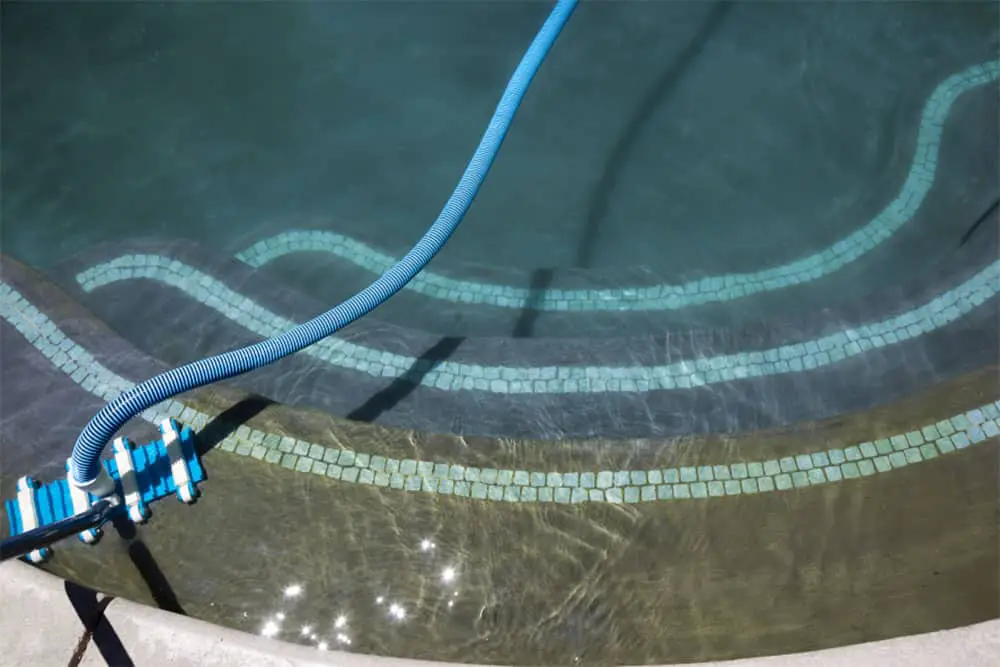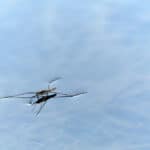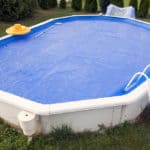It doesn’t matter how often you feel as if you are cleaning your pool - it seems like no chemical in the world will get rid of the green gunk at the bottom of the pool.
Algae needs a little more attention than regular pool cleaning, however.
A pool requires proper sanitation, circulation, and filtration to prevent growing stubborn algae. Algae love sunlight, which promotes germination, which is why a swimming pool is the perfect environment for algae to grow.

Sure, algae aren’t harmful to those swimming in a pool, but nobody wants a green swamp-like pool. Prevention is key, but there are ways to clean algae from your pool.
Here is our step-by-step guide on how to get algae off the bottom of your pool, along with some frequently asked questions about algae!
Why shouldn’t I have algae in my pool?
While algae in the bottom of a pool isn’t dangerous to a person’s health, you’ve got to think about the consequences of a slippery surface.
Algae are slimy to walk along, which means that if a swimmer uses the bottom of the pool to lift themselves out of the pool, they could easily slip on the algae.
This means that algae is a safety hazard that can lead to injury or even drowning.
Likewise, dead algae turn gray and white, which turns the bottom of the pool into a cloudy and murky mess.
This can confuse a swimmer about the depth of the pool, which could lead to an injury if they were to unknowingly dive into a shallow pool.
You’ve got to think about algae in the same way as weeds in a garden - nobody wants them. Just like weeks, algae requires prevention more than a cure, which means the cure to cleaning algae can be tough.
How to get algae off bottom of pool: Step-by-step guide
Step 1
The first step is to test the balance of the water chemistry. This is something you should be doing frequently as a pool owner to keep an eye on the chemicals in the water quality, as an imbalance of water chemistry can be the root of algae growth.
To do this, you need to invest in a good test kit that can check the pH and chlorine levels. Ideally, the pH level should be at 7.8 with the help of sodium carbonate, and the chlorine level should be at least above 1 ppm (parts per million).
Step 2
Now you need to turn on the pump and leave it on for 24 hours. A regular, non-algae-ridden pool would usually have the pump running for around 6 to 8 hours in a day, but algae treatment requires a constant pump system.
Step 3
Make sure to remove any debris from the pool. This includes leaves, dirt, and floating algae. Using a net is the easiest and quickest way to scoop all the debris out of the water.
Step 4
The next step is to brush your pool! Brushing your pool is one of the most satisfying parts of removing algae from the bottom of your pool. A stiff or wire pool brush is best for a concrete or plaster pool.
Like with a long pool net, you should invest in a long pool brush to reach the bottom of the pool. Make sure to scrub the walls and the corners, too.
Step 5
Brushing alone won’t get rid of the algae. Like with a home, you need to vacuum the bottom of your pool. There are lots of pool vacuum cleaners available on the market, all of which are designed to clean the bottom of the pool from any lingering dead algae.
Brushing this beforehand is helpful as it lifts the algae from the surface enough to be sucked into the vacuum.
You should use a vacuum cleaner in your pool at least once a week. Make sure to vacuum the walls, corners, and the stairs.
Step 6
Now, you need to clean your filters. Algae get stuck in pool filters all the time, as well as the filter in the vacuum. If you don’t clean the filters, it will encourage algae to grow back.
Step 7
This step is all about killing off any potential algae that is lingering around that could cause regrowth. Shocking a pool with calcium chloride works to kill off any bacteria that shouldn’t be in your pool (like algae).
Step 8
Once the algae has been killed, now you need to prevent regrowth. Algaecide works similarly to a pesticide, where it works to prevent any algae from growing back into the pool.
Removing dead brown algae
Brown algae are still dead algae, which are usually gray or white, only with a different coloring depending on the light exposure and environment.

Dead brown algae requires more frequent vacuuming than other types of algae, as it is the most visible and unappealing.
Removing green algae
Green algae can either be dead or alive, but it is generally the easiest to clean. The best way to get rid of green algae is with a brush that can scrub away all the stubborn algae.
Then, drop a chlorine bleach tablet into the water. This will help to dissolve the algae that has been brushed from the surface. Then, vacuum the walls and floor as usual.
Conclusion
Algae at the bottom of a pool can be a nightmare for some pool owners.
Swimming pools require frequent and specific cleaning and maintenance to prevent the owner from having to commit to deep cleaning sessions that can be costly and time-consuming.
The best way to cure algae is prevention, but sometimes the aquatic plant still finds its way into your pool.
Not only does algae make your pool look gross, but swimming in an algae-ridden pool can increase the chances of slipping, which can lead to injury or even drowning.
Luckily, there are ways to get rid of algae in the bottom of your pool, but make sure to stick to your cleaning schedule to prevent algae growth!









